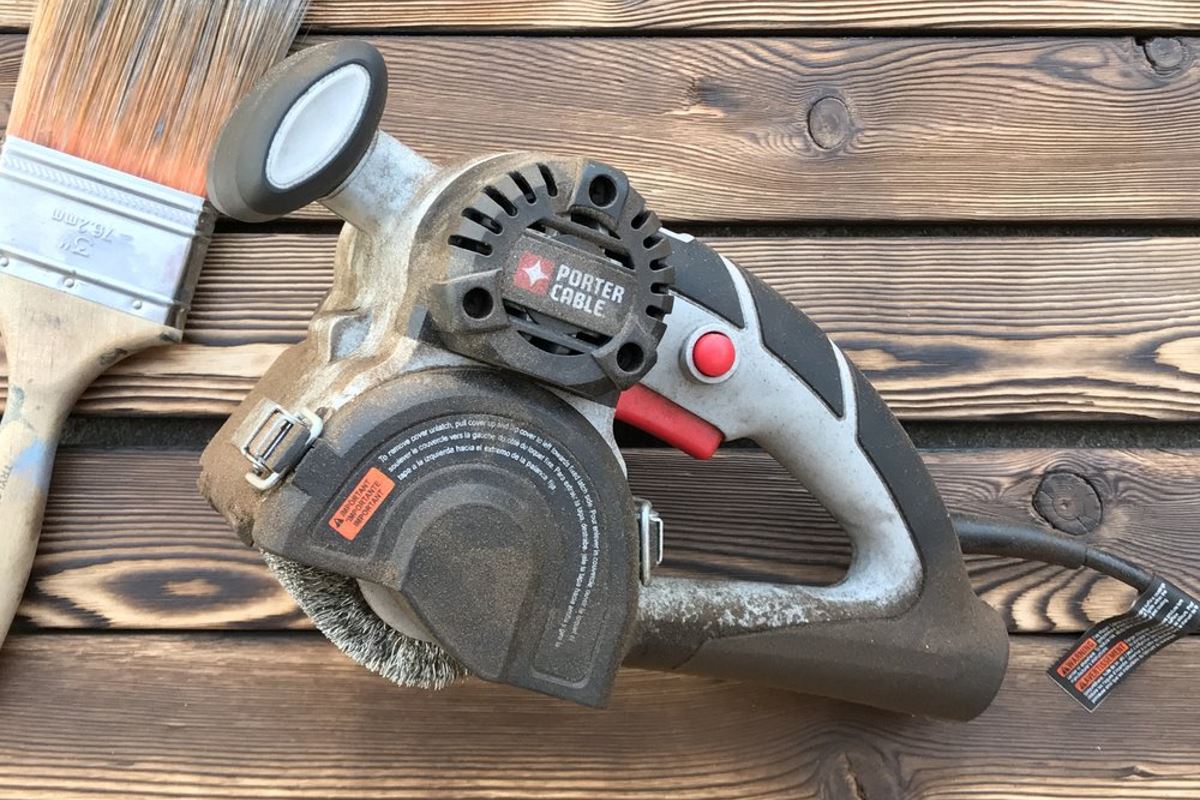Rating of the best monoculars for 2025
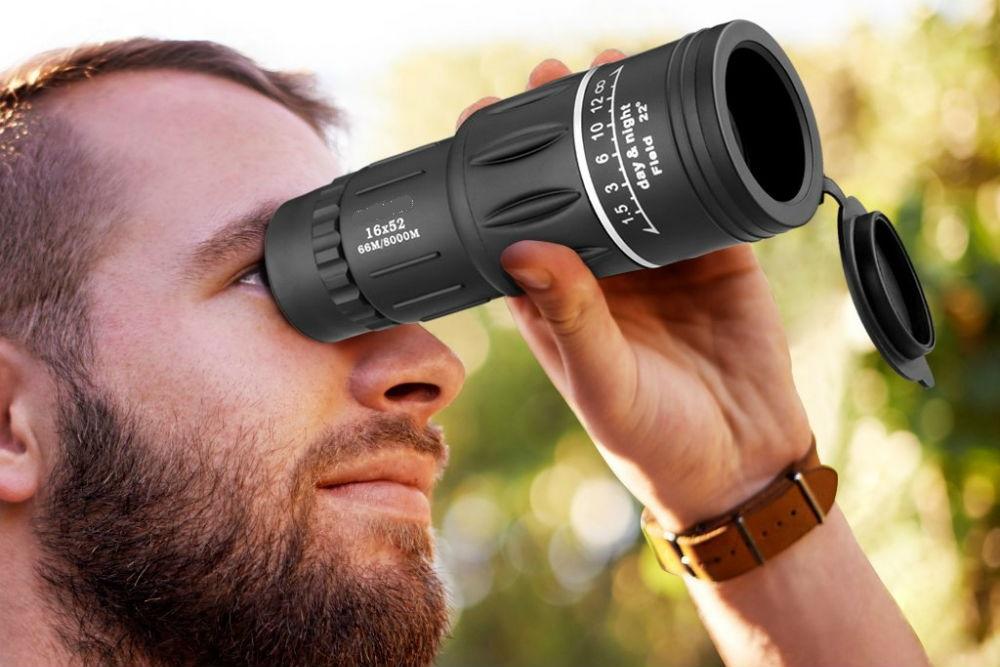
A monocular (in the common people - "one-eyed") can be compared with a portable spyglass or a low-power telescope. In the hand, this device should be held like binoculars, but observation through it is carried out with one eye, as in a telescope. In general, the technical characteristics and design of the monocular are similar to the above observation devices, but its dimensions are much smaller.
Compact dimensions are the main distinguishing feature and the main advantage in relation to competitors, which has a monocular: there are models that are no longer than the index finger and their thickness is no more than a conventional handle. Almost any model can be placed in a pocket or a small hiking bag. An additional function of the described portable device can also be called its use as a magnifying glass (loupe).
Content [Hide]
Binoculars and spyglass vs monocular
If the user needs to inspect a large area for a long time, then it is preferable to use binoculars for these purposes. During its use, both eyes are involved at once, which means that the body receives a smaller share of visual stress. Thus, if the task of the observer is a long-term survey of a large area, observation of stars or birds, surveillance, or another complex process, then binoculars will be many times better than a monocular.
At the same time, a compact monocle can always be with the user in a place where it is impossible to take bulky binoculars. To be always at hand is its immediate purpose. Observation of a short period may sometimes be needed on a hike, on excursions, in hunting - in general, then a monocle can become an indispensable tool. Depending on the goals, each user makes his own choice in favor of one or another optical device.
Regarding the telescope: it is useful only when the user needs increased resolution or multiple magnification. At first glance it may seem that the telescope is just an enlarged monocular, however, these two devices have different optical systems. Among other things, some models of tubes have large dimensions and in order to obtain a better image (to avoid shaking), the tube must be mounted on a special tripod - this provides an extra measure of stability when observing in high magnification conditions. The monocular can be used even while standing on toes or peeking around a corner. Although, some of its models can also be mounted on a tripod and even connected to smartphones (or other video / photography devices) to take digital photos.
Design
In many ways, it is similar to the structure of a spotting scope and binoculars. The difference in most cases is only in size and shape. Although monocles are smaller, at the same time they have lower magnification / power. The difference from binoculars will be in a smaller viewing angle and increased tension of the optic nerve.
The design of the monocular consists of:
- lens;
- Inverting system (through the use of a prism);
- Eyepiece.
This device and low weight allow you to inspect the required area in a short period when it is not possible to take more powerful optics with you.
Main properties and characteristics
In everyday life, I often use a monocular for fishing, hunting and tourism. Based on the needs for which you need an optical device, you should decide on its main functions and parameters that it must meet.Below are the properties to pay close attention to:
- The multiplicity used in the device;
- Prism system used;
- Lens and its diameter;
- Ability to adjust diopters;
- Lens and its anti-reflective coating;
- Protection of the housing against ingress of foreign particles (dust and moisture).
The last two properties are directly important, since any optical device must have high-quality lenses and minimal housing protection, otherwise the observation may have a zero result. The most expensive and powerful models have high performance on all points of the main characteristics, but the price of such devices is extremely high. Nevertheless, it also makes no sense to exchange for cheap optics, so the choice of a monocular device often becomes difficult for the user.
Objective diameter and monocular magnification
multiplicity called a characteristic that shows the degree of approximation to the object of observation. Usually it is indicated by the first digit in the name of the device. For example, marking in "6x15" means that the objects in question will appear 6 times closer than they really are. It seems that the larger the multiplicity of the device, the better. However, this is associated with some inconvenience: the more the device can enlarge the picture, the more difficult it is to operate. This principle fully corresponds to a monocular instrument.
It is known from practice that a magnification of 5 or 6 times is acceptable for a monocle - such tools have more or less clear image stabilization and optimal weight. With an increase of 8 times or more, the user will already encounter vibration (“shaking”) of the picture, and the field of view will become much narrower.The most problematic are models with a magnification of 10x and higher - for them you will already have to use a tripod, in addition, their dimensions will no longer be pocket-size. In some situations they will definitely be needed, but monocles are characterized by a fixed magnification, for which, in fact, they were intended as portable devices.
Lens diameter call the size of the lens in millimeters, which is installed in front of the structure. It is marked with the second digit in the model name. The luminosity of the monocular depends on this property - the larger the diameter, the greater the power. It is worth remembering that a large input lens is not always the best solution, because the larger it is, the heavier the mass of the device itself. For example: a “one-eyed” with parameters of 10x40 weighs about half the mass of ordinary field glasses, but the parameters of 5x15 already allow reaching dimensions no thicker than a human thumb.
Pupil removal, visual field, optics enlightenment and other parameters
field of view called the region of space that is viewed through the eyepiece. For a more visual representation, it is possible to give the following example: if we consider the fence at a distance of 1 kilometer with a linear field of "one-eyed" at 113 meters, then it is possible to view a fragment from the fence, which will be only 113 meters. At the same time, it is worth remembering that the narrowing of the visual field will occur when the multiplicity changes. In the event that the survey latitude plays a greater role for the observer, then the smallest multiplicity should be used. As a practical example, the following situation can be cited: hunters, for shooting at moving game, always use wide-field "one-eyed" because the target can quickly slip out of the field of view.If the object of observation is inactive or simply static (as an option: firing practice in the army), then it is better to use a high magnification monocle.
Removing the exit pupil called the distance between the eyepiece and the eye, at which the set field of view is completely visible and the clarity of the picture is not distorted. This parameter is measured in millimeters and is also referred to as "pupil relief". This property is extremely important for spectacle wearers because the frame and lens of the spectacles exhibit some distortion as the eye approaches the exit lens. If the observer does not plan to take off his glasses during the observation, then he should use a "one-eye" with a pupil distance of 14 millimeters or more.
Sharpness and its depth - this is the name of the maximum allowable value at which there is no need to re-adjust the focus.
Optical coating means the effect of illumination at the time of observation on the lightness of the picture and color correction and color reproduction. Expensive one-eye models use optics with full multilayer coating (FMC), followed by models with standard multilayer coating (MC), budget models have single-layer coating (C).
Filling with gas means filling the hermetic body of the device with a special inert gas, which prevents the formation of condensate on the internal parts and structural details.
IMPORTANT! If the optical device will be used in difficult conditions (whether hunting or camping), a model with a waterproof housing (WP - water proof) should be used. However, in all other conditions, this protection may not be needed - it is quite possible to get by with splash protection (WR - water resistance) and not overpay extra money.
Night vision monoculars
These samples will differ from conventional models by an enlarged lens (and its diameter), the presence of special protection against light exposure, and an automated brightness control system. At the same time, infrared illumination can be used in "night one-eyes". These models are extremely relevant for fishermen and hunters, professional tourists, the military, employees of various law enforcement agencies. They, like younger brothers, usually do not take up much space and can be taken with you on any trip.
Learn more about proper selection of characteristics
Most professionals advise paying attention to the characteristics of the monocular, and not to its manufacturer. The following parameters will play a big role:
- Prism used - ROOF - straight model (lens and eyepiece are on the same axis), PORRO - curved model in the shape of the letter "S" (eyepiece and lens are located on different axes, communicate with each other using mirrors). Naturally, the first model is more compact.
- Lens diameter - large sizes have a greater aperture, so it is convenient to use them in the evening and in cloudy weather;
- Protected design - here it is necessary not only to remember about the inadvertent entry of foreign particles into the body (dust, moisture, dirt), but also to protect the body and lenses from fogging.
Rating of the best monoculars for 2025
Budget models
3rd place: Veber Sport BR 12×32
votes 0
Reliable, small in size and light in weight device. With all the minimalism of this model, a good power is realized in it. Even in the evening and in cloudy weather, the device is able to produce a good image due to the use of aperture in abundance.In addition, it comes with a protective case for transportation.

| Name | Index |
|---|---|
| Manufacturer country | Russia |
| multiplicity | 12 |
| Lens diameter | 32 |
| Price, rubles | 800 |
- Extremely democratic price;
- Sufficient power;
- Case included.
- Fragile lens;
- Weakly protected case.
2nd place: Bushnell 16×52
votes 0
Probably the best version of the device from Chinese manufacturers. It is able to support magnification and lens adjustment, which means that it can be quickly adjusted to the individual's vision. The lenses themselves (both input and receiving) are slightly "recessed" into the body, which makes observation in very bright light more comfortable.

| Name | Index |
|---|---|
| Manufacturer country | China |
| multiplicity | 16 |
| Lens diameter | 52 |
| Price, rubles | 1100 |
- Improved multiplicity setting;
- Special lens mounting design;
- Extremely bright light protection.
- The lens may fog up when the operating temperature changes abruptly (suddenly moving from a frost to a warm room).
1st place: Sturman 10x40 monocular
votes 0
Extremely compact model - about 17 centimeters in length. With its relatively small declared power, it is very easy to use. Perfectly will be suitable for excursion and tourist needs. Moreover, the sample is made of an aluminum case and is additionally rubberized. With a simple rotation of the eyepiece, it is very convenient to adjust the focal length. This monocular can be used with equal success both for observing moving and static objects.

| Name | Index |
|---|---|
| Manufacturer country | Russia |
| multiplicity | 10 |
| Lens diameter | 40 |
| Price, rubles | 1500 |
- Reinforced body protection;
- Excellent picture;
- Application of RUF technology;
- democratic value.
- Low power.
Middle segment
3rd Place: Celestron Outland 6×30 Monocular
votes 0
Despite the small magnification available on this device, it compensates for this circumstance with an excellent viewing angle and an excellent field of view. It can deservedly compete in these parameters even with samples from the premium class. The picture is very clear and the contrast does not hurt the eyes. The case is made of high-strength plastic, and the device itself weighs about 220 grams. Additionally, it comes with a waterproof case.
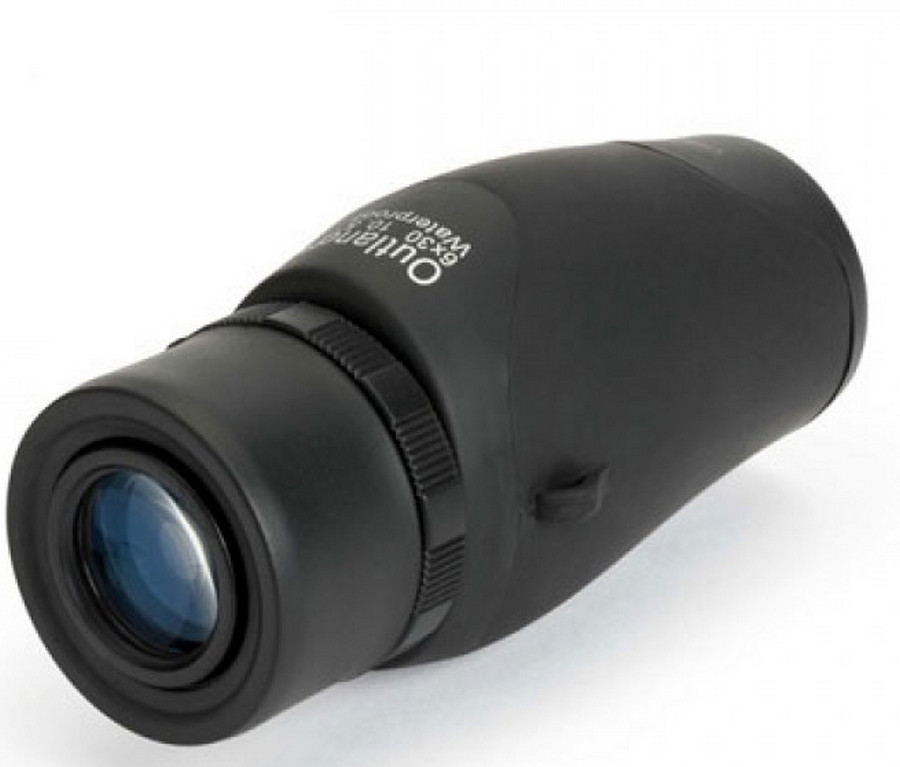
| Name | Index |
|---|---|
| Manufacturer country | USA |
| multiplicity | 6 |
| Lens diameter | 30 |
| Price, rubles | 2500 |
- Reinforced hull;
- Sharp image;
- Ability to adjust eye relief.
- Small multiplicity.
2nd place: Komz mp 15x50
votes 0
A specialized monocular can be successfully used for active travel. The extended field of view is especially suited for tracking moving game. Its light weight and dimensions allow it to be conveniently placed in a pouch or breast pocket. It has a very simple design.

| Name | Index |
|---|---|
| Manufacturer country | Russia |
| multiplicity | 15 |
| Lens diameter | 50 |
| Price, rubles | 3900 |
- Specialized model for hunting;
- Has a wide viewing angle;
- Simple design.
- A slight inconvenience can be delivered by a protruding eyepiece, which can “crash” into the eye socket.
1st place: LEVENHUK Wise PLUS 8×32
votes 0
Qualitatively coated lens and used eightfold magnification provide this "one-eye" a leading position in its segment. The design provides for a soft rubber eyecup, which does not create excessive discomfort for the eye socket of the observer. The body is filled with nitrogen from the inside and is completely sealed. It comes with a special strap, a cleaning cloth and a cap for the lens.
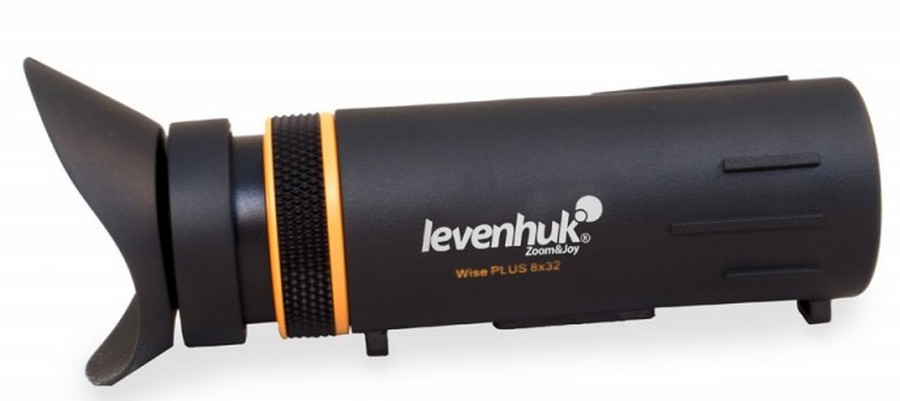
| Name | Index |
|---|---|
| Manufacturer country | Russia |
| multiplicity | 8 |
| Lens diameter | 32 |
| Price, rubles | 4500 |
- Sharp image without excessive "chromatism";
- Excellent equipment;
- Current price.
- There may be some blur around the edges of the image.
Premium class
3rd place: HAWKE NATURE TREK MONOCULAR 15X50
votes 0
A 15x magnification of this monocle provides excellent detail of the observed area of space. Users unanimously note the convenient placement of the focus wheel. Additional comfort is provided by retractable eyecups. Completeness is extended with a special tripod for installation and fixed observation. The design uses special prisms based on the BaK4 technology with the option of multilayering.
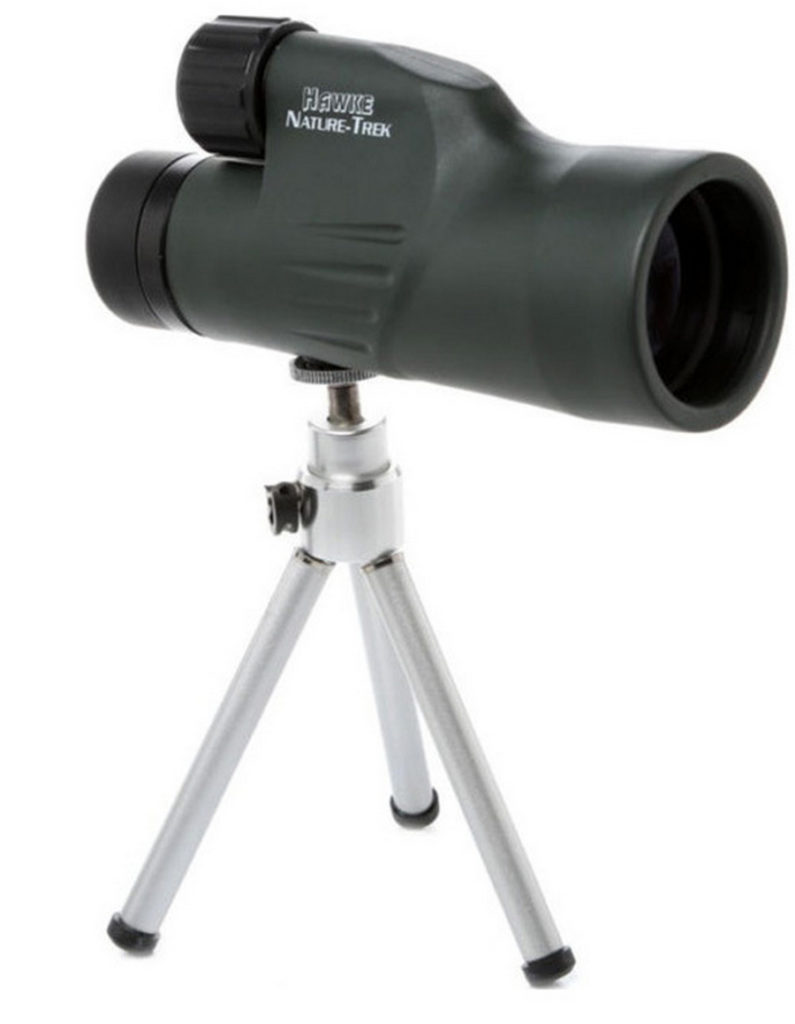
| Name | Index |
|---|---|
| Manufacturer country | Great Britain |
| Increase | 15 |
| Thread diameter | 50 |
| Price, rubles | 13000 |
- Innovative technologies applied;
- Increased equipment;
- Light weight - 415 grams.
- Focusing distance - 2.5 meters.
2nd place: YUKON NV 5X60
votes 0
This sample is preferred by experienced hunters and tourists, for whom additional functionality is of no small importance.The monocle is equipped with a lens with an expanded diameter, has a built-in infrared illumination for a distance of up to 100 meters. It can work in complete darkness, it is possible to connect to external photo and video devices. The surf has additional protection against external extreme conditions.
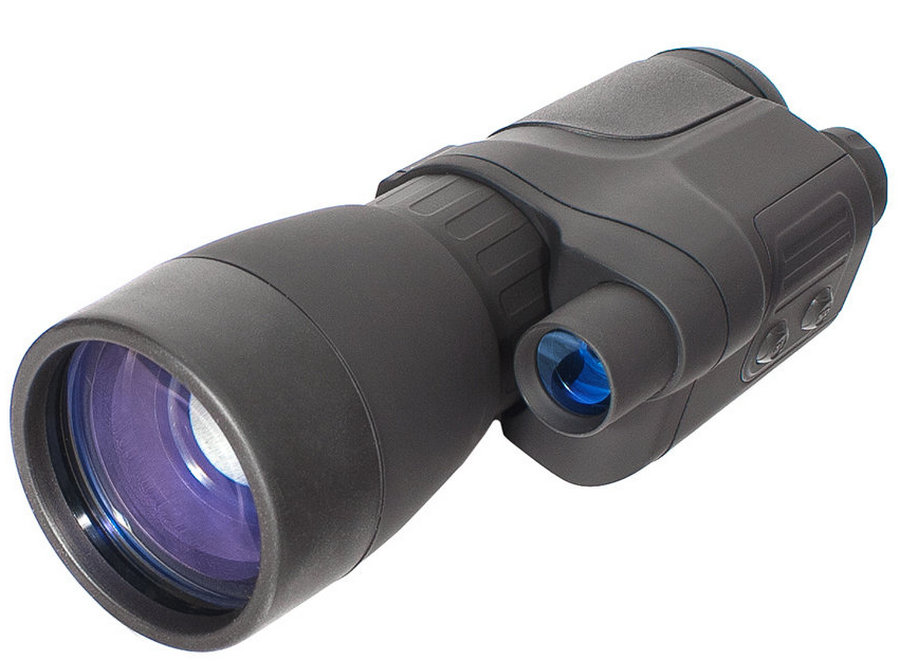
| Name | Index |
|---|---|
| Manufacturer country | USA |
| Increase | 5 |
| Thread diameter | 60 |
| Price, rubles | 15000 |
- Multifunctionality;
- Additional IR illumination;
- The temperature regime of operation has been expanded (-30 to +40 degrees Celsius).
- Small battery for IR illumination (48 hours);
- Considerable cost.
1st place: BRESSER NATIONAL GEOGRAPHIC 5X50
votes 0
A sample from a German manufacturer, considered the best in all of Europe. Provides excellent visibility in any weather, has infrared illumination. The lens is protected by a special coating that eliminates the appearance of external errors for the image. The design has an automatic monitoring function with a shutdown timer. Recording to external devices is possible at the same time. With a fairly large size, it is light in weight.

| Name | Index |
|---|---|
| Manufacturer country | Germany |
| Increase | 5 |
| Thread diameter | 50 |
| Price, rubles | 22000 |
- Small weight with large dimensions;
- Lens with a special coating;
- Automatic monitoring with timer.
- Manual brightness control in the "hi-tech" model.
Instead of output
After reading this article, you may get the impression that a monocular is quite capable of replacing both a telescope and binoculars. However, this is not quite true.Indeed, the paired use of two different models of "one-eye" will quite cope with the tasks of binoculars, especially since the price for their purchase will be much lower. Nevertheless, both the tube and the binoculars are used for specific types of tasks, so it will not be possible to completely replace them in certain cases.
Modern industry is able to offer various models of monocles, the main thing is to choose them correctly. For example, on the “peephole” it is possible to recognize high-quality optics by the characteristic multi-colored tints that will be present, coupled with a sense of the depth of the lens. When buying a device with a large lens, it is necessary to check the body assembly - it should not contain scratches, mechanical damage, and backlashes not provided for by the design. At the same time, the body material must prevent overheating of the device.
As a result, high-quality monoculars can be easily purchased both in trusted online stores and in retail chains.
new entries
Categories
Useful
Popular Articles
-

Top ranking of the best and cheapest scooters up to 50cc in 2025
Views: 131651 -

Rating of the best soundproofing materials for an apartment in 2025
Views: 127690 -

Rating of cheap analogues of expensive medicines for flu and colds for 2025
Views: 124519 -

The best men's sneakers in 2025
Views: 124033 -

The Best Complex Vitamins in 2025
Views: 121940 -

Top ranking of the best smartwatches 2025 - price-quality ratio
Views: 114980 -

The best paint for gray hair - top rating 2025
Views: 113395 -

Ranking of the best wood paints for interior work in 2025
Views: 110318 -

Rating of the best spinning reels in 2025
Views: 105329 -

Ranking of the best sex dolls for men for 2025
Views: 104366 -

Ranking of the best action cameras from China in 2025
Views: 102216 -

The most effective calcium preparations for adults and children in 2025
Views: 102011



